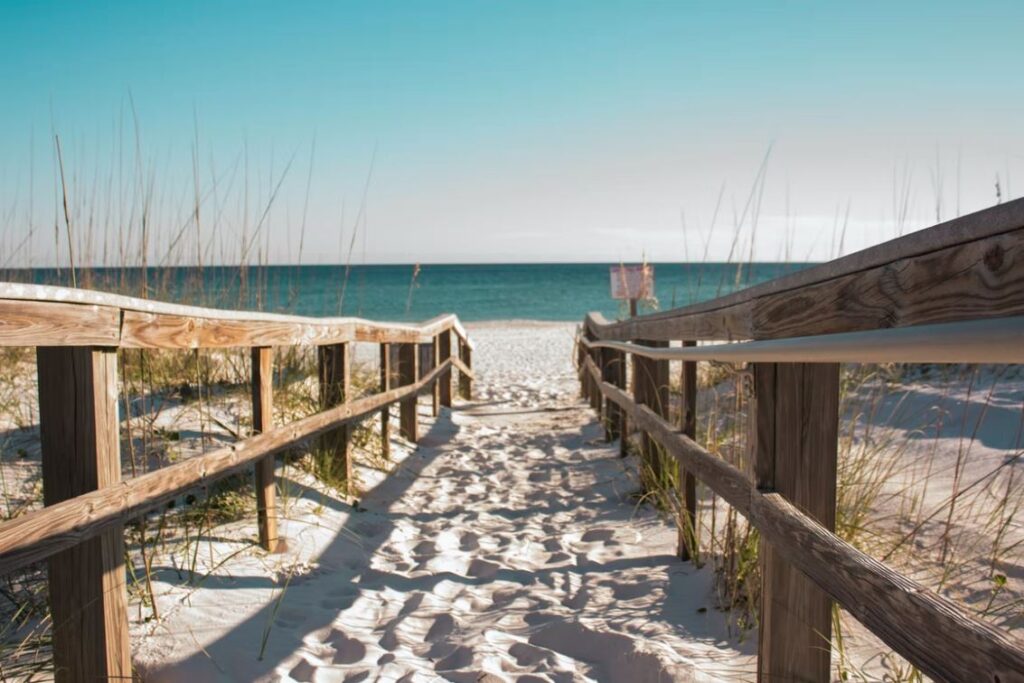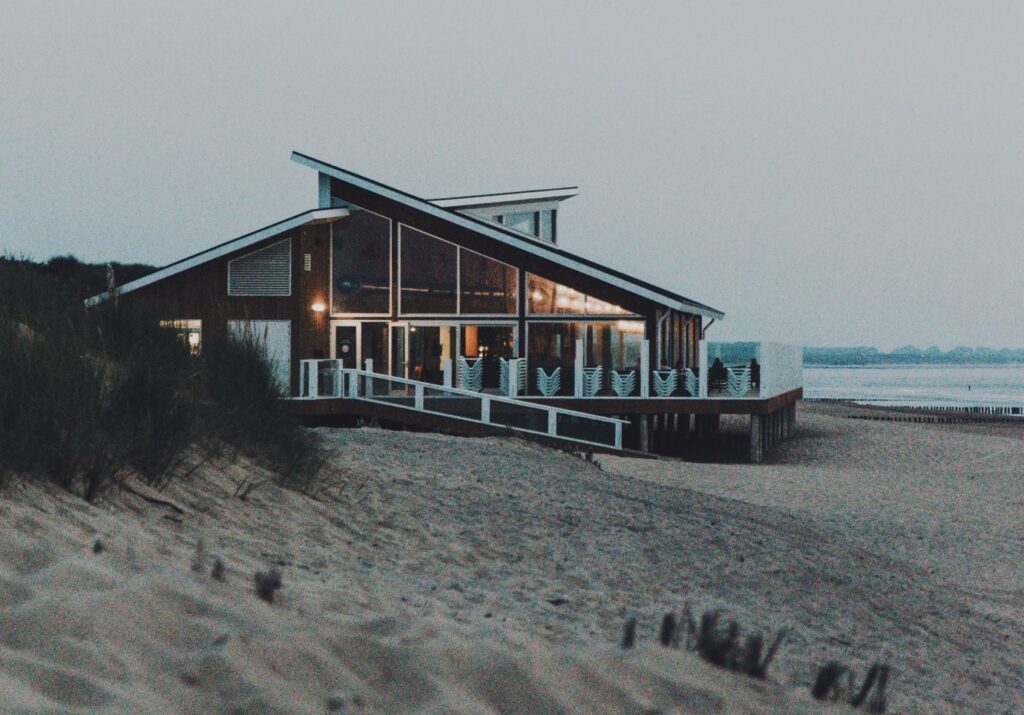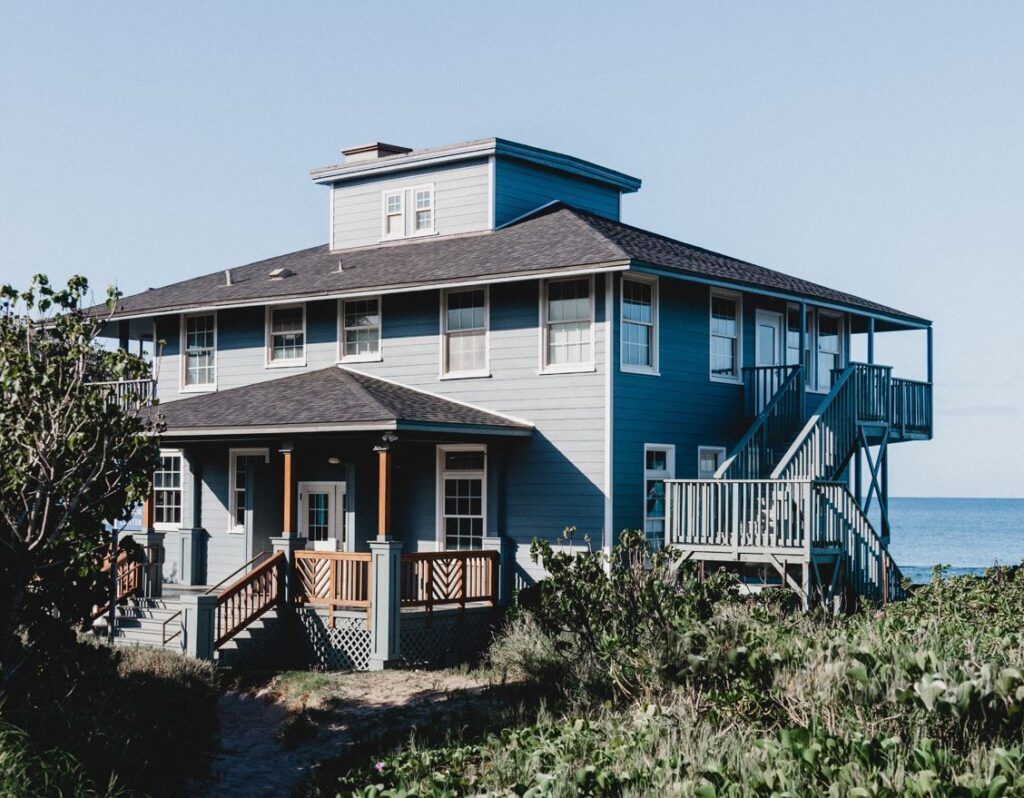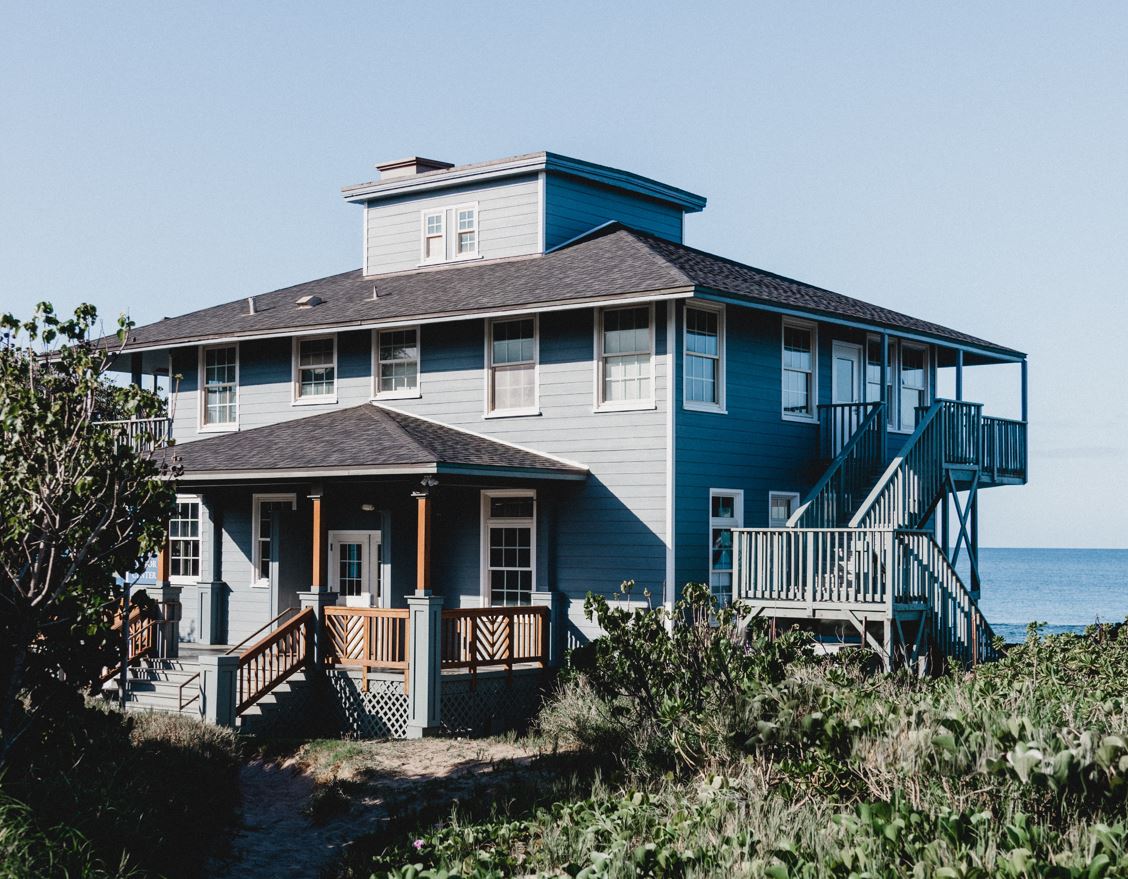Most people only dream of owning a beach house at the Jersey Shore, but with the right planning and some careful consideration, the refreshing sea breeze of the salt air can be within reach.
A beach house can be a great investment, both for personal use and as a rental property. With the right design, your waterfront house can be both comfortable and stylish, perfect for a weekend getaway or a permanent vacation spot. Let’s take a look at some of the things you’ll need to consider when building your beach house.
Location, Location, Location
When choosing a location for your beach house, you’ll need to take into account a few things. First, you’ll want to make sure that the area is prone to good weather conditions most of the time – after all, you’re building a waterfront house for a reason! This is important if you’re planning on building outdoor living spaces. Maybe you’ve always wanted an outdoor kitchen in your outdoor space?

View This Recently Completed New Construction Home, Available Now in Howell
2 Carmine Way Howell, NJ 07731
When you hire a custom home builder to build your beach house in New Jersey you’ll need to consider how close the house is to the beach, as well as any amenities that you might want to be nearby (restaurants, shopping, etc.). Additionally, you’ll need to factor in the cost of the land itself – waterfront property can be expensive in Monmouth County and Ocean County New Jersey!
Size and Layout
When it comes to size and layout, there are a few things you’ll need to think about. First, how many people will you be accommodating? You’ll want to make sure that the house is big enough, but not too big – after all, you don’t want it to feel too cramped when you’re spending time there.
Additionally, you’ll need to consider the layout of the house. How many bedrooms and bathrooms do you want? Do you want an open floor plan or something more traditional? Once you have a good idea of what you’re looking for, you can start looking at house plans and designs. There may often be a specific house plan that compliments the neighborhood.

Materials and Construction
When building a beach house, you’ll need to select materials that can withstand the harsh coastal elements. In addition to being durable, your materials should also be easy to maintain and repair. Here are a few of the most common construction project materials commonly used for standard and raised beach houses:
Wooden framing
Wood is a popular choice for framing waterfront houses, as it is strong and durable. However, it is important to select a type of wood that is resistant to rot, such as cedar or redwood.
Vinyl siding
Vinyl siding is a popular choice for beach houses because it is easy to maintain and repair. In addition, vinyl siding comes in a variety of colors and can be painted or stained to match the style of your house.
Concrete
Concrete is a durable material that can withstand the salty air and high winds of the east coast. However, it is important to seal the concrete to protect it from water damage.
Fiberglass
Fiberglass is a lightweight material that is resistant to moisture and rot. It is often used for the construction of boat docks and decks.
Design and Décor
When it comes to decorating your beach house, you’ll want to keep things light and airy. If you aren’t planning to live in the space year round, fewer furnishings and home décor items will make it easier to keep clean and leave plenty of room for what you and your guests bring with you when you stay there. You don’t want the space to feel too cramped or cluttered.
Use your own personal taste to select the colors and furnishings that bring you joy and make you feel comfortable. Jersey Shore style beach homes that are suitable for either vacationing or residing in year round, traditionally include a few elements. At least a few of these design choices are typically found inside homes and businesses that are located close to the beach in New Jersey.
Here are a few tips for decorating your house:
- Use light colors and natural materials like wood, rattan, and wicker.
- Keep the furniture simple and streamlined.
- Incorporate nautical elements like rope, anchors, and life preservers.
- Add plants and flowers to create a local beach feel.
Furnishings and Amenities
When furnishing your waterfront house, you’ll want to select pieces that are both comfortable and stylish.
Here are a few tips:
- Choose light-colored furniture and accessories. This will help to brighten up the space and create an airy feel.
- Select furniture that is easy to move around. This will make it easier to rearrange the furniture if you want to change things up.
- Include a mix of both indoor and outdoor furniture. This way, you can enjoy the outdoors even when you’re inside.
- Be sure to include plenty of storage for all of your beach gear!
What are the risks of owning a beach house?
When it comes to owning a beach house, there are a few risks that you should be aware of.

The biggest risk is the cost of maintaining the house. Since beach houses are often located in coastal areas, they can be subject to harsh weather conditions and saltwater exposure. This can cause damage to the structure of the house, air conditioning units and satellite dishes. Since the sea air is filtered inside the house as well, it can also affect your furnishings and appliances.
Another risk to consider is the possibility of theft. Beach houses are often located in remote areas and vacation towns, making them easy targets for break-ins. Be sure to take steps to secure your houses, such as installing security systems and outdoor lighting.
Lastly, you’ll need to think about the risk of flooding. Many coastal properties fall in low-lying areas, which makes them susceptible to flooding during storms. Most waterfront homes are in flood zones. As a result, it is always recommended to purchase flood insurance if you’re planning on owning a beach home. It will be important to get more information about the property’s base flood elevations before making a final decision.
Since Superstorm Sandy hit the Jersey Shore in 2012 many waterfront homes in Ocean and Monmouth County have been lifted to accommodate directives from the homeowner’s insurance companies. That powerful hurricane caused a tremendous amount of expensive damage to homes and businesses along the coast of New Jersey and houselifting services provided by local contractors became popular for years after the event. New homes built since that time take these requirements into consideration as part of the original design. When the main floor of the home is lifted to a height that is typically above the flood zone, both home owners and insurance companies can rest easier because expensive flood damage will be less likely to occur.
Final Thoughts
Owning a beach house can be a great investment, both for personal use and as a rental property. With the right design, your vacation house can be both comfortable and stylish, perfect for a weekend getaway or a permanent vacation spot.
However, there are some risks to consider when owning a beach house, such as the cost of maintaining the house, the possibility of theft, and the risk of flooding. Be sure to weigh these risks before making your decision.
Interested in Building a Beach House or Waterfront Home in New Jersey?
Contact Us To Discuss Your Project! Call 732-905-0005
Frequently Asked Questions
Q: What is the best material to use for a beach house?
A: There are a few different materials that can be used for a beach house. Wood, vinyl siding, concrete, and fiberglass are all popular choices. It is important to select a material that is durable and easy to maintain. You may also want to consider ceiling fans and a sliding glass door.
Q: What type of foundation is best for a waterfront home?
A: The type of foundation you’ll need for a waterfront home depends on the location of the property and the soil conditions. If you’re building on a sandy lot, you’ll need to have a deep foundation. If you’re building on a rocky lot, a shallow foundation will suffice. It is important to consult with a local contractor to determine the best type of foundation for your coastal property.
Q: Is it more expensive to build a house on stilts?
A: It can be more expensive to build a house on stilts, but it is often worth the investment. Houses built on stilts are less likely to be damaged in floods and storms. They also tend to have better views. If you’re considering building a house on stilts, be sure to consult with a local contractor to get an estimate for the costs.


